The Two Sides in the Civil War The

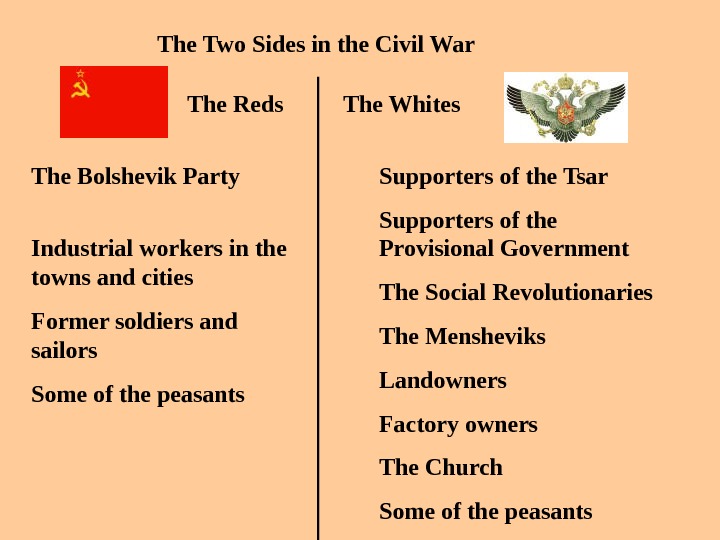

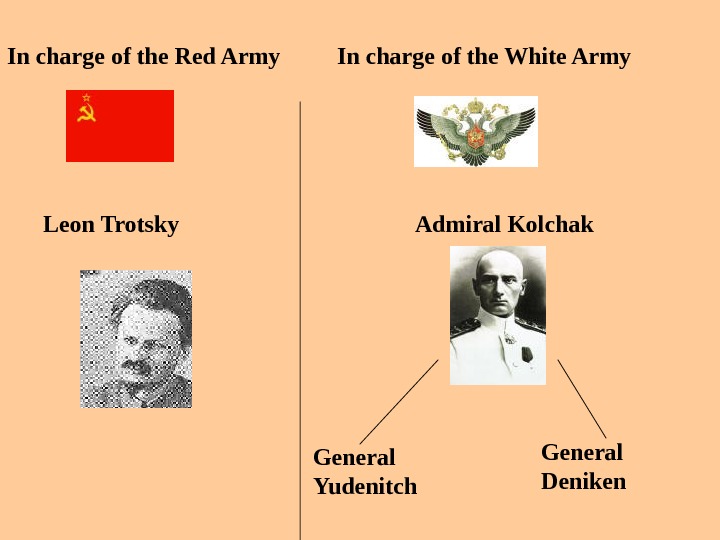
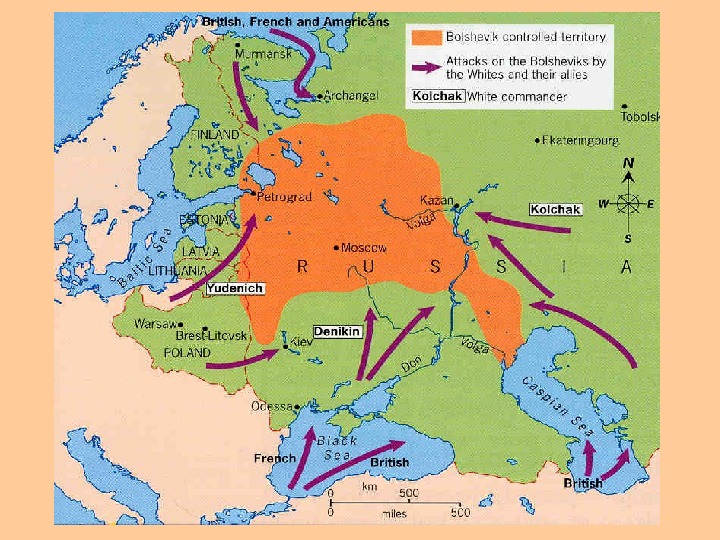
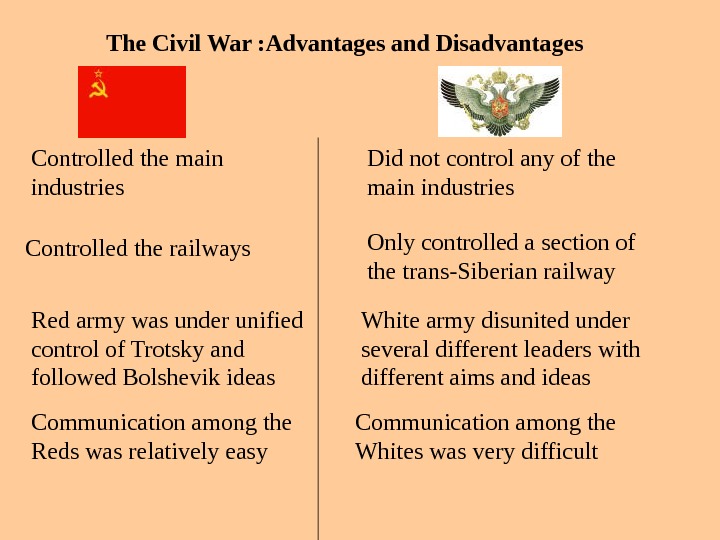
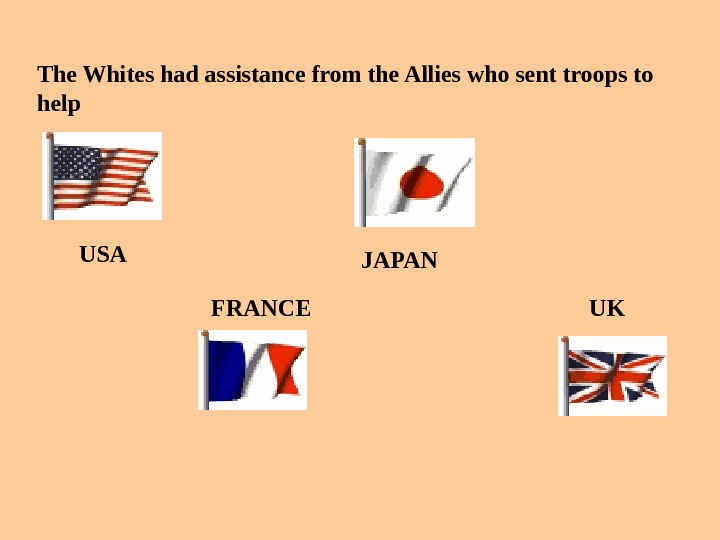

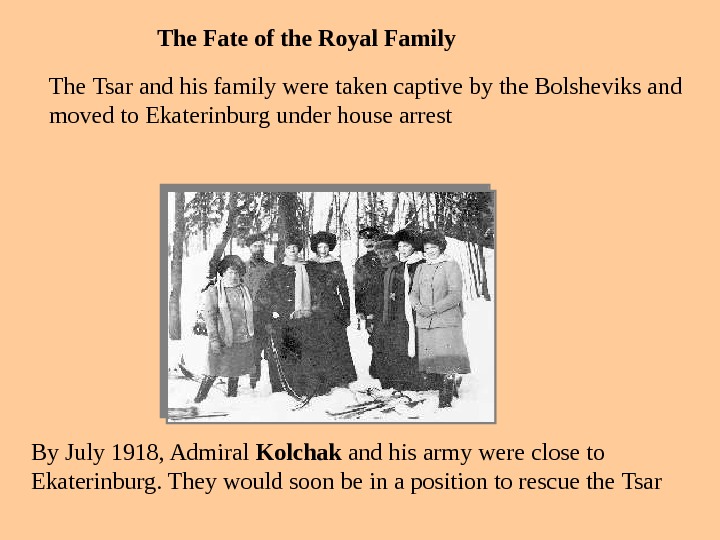
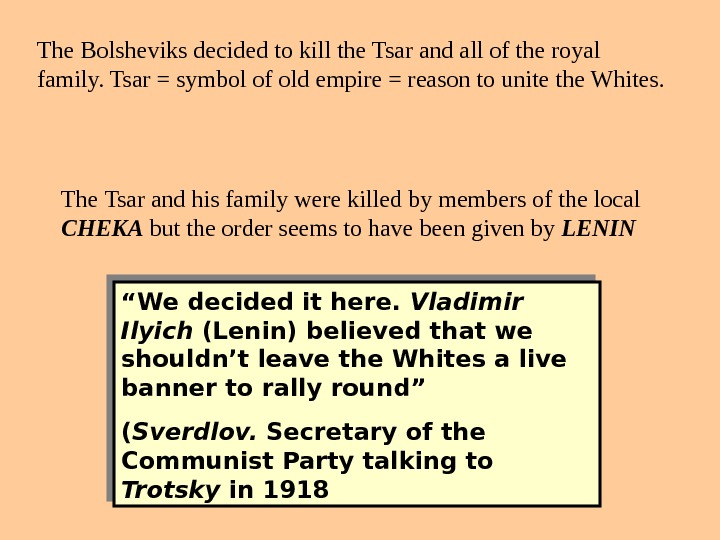
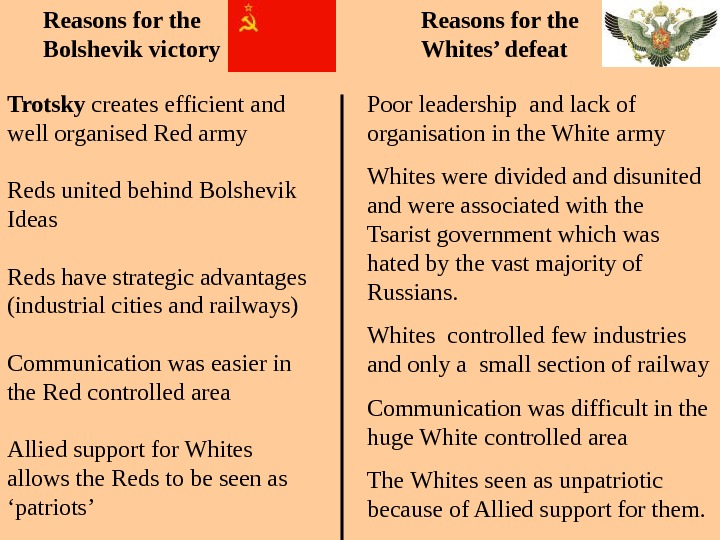
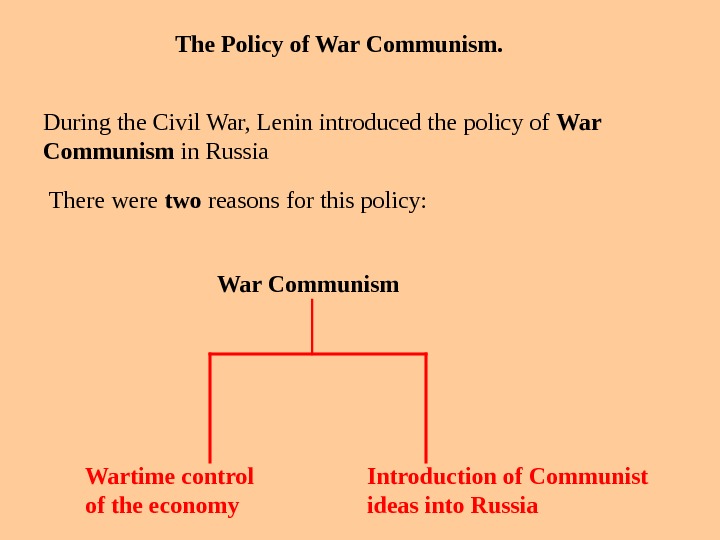
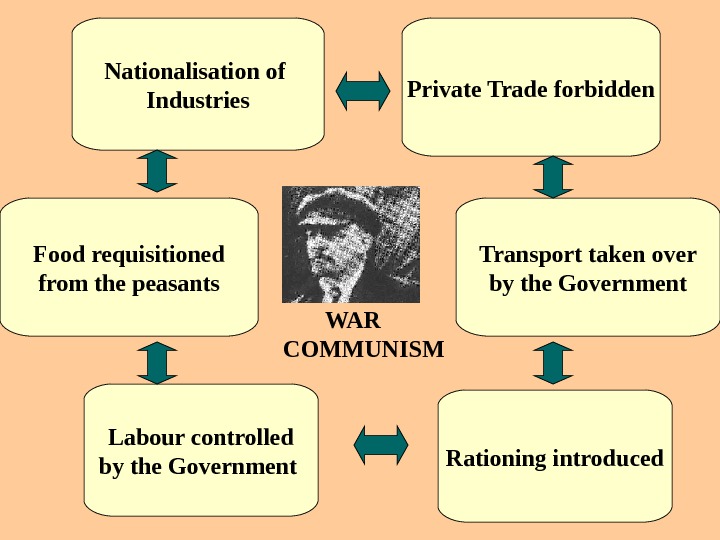
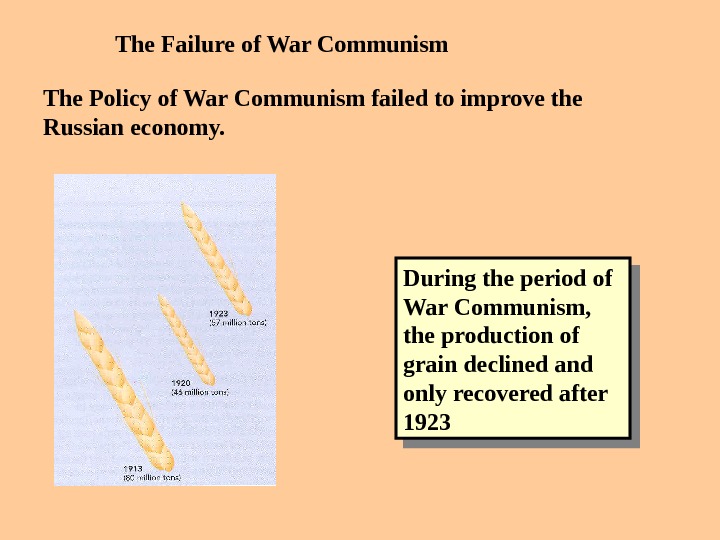
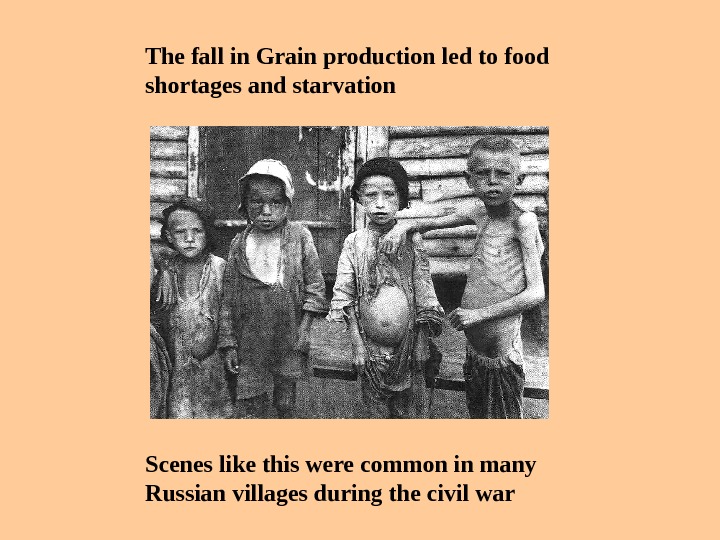
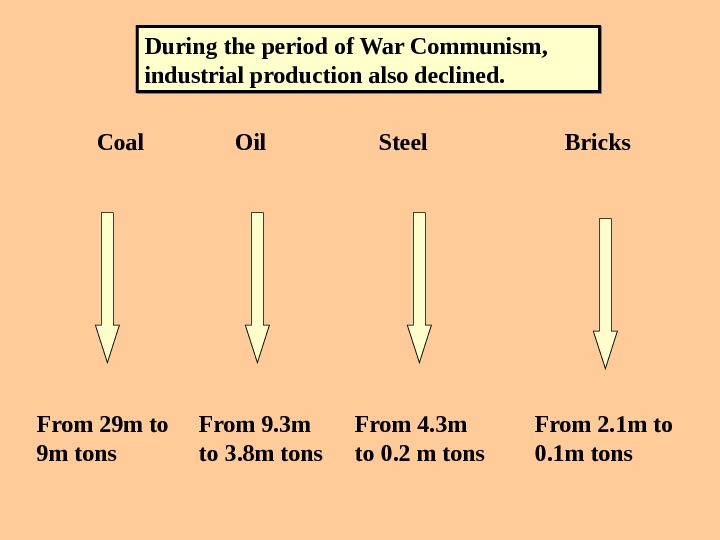
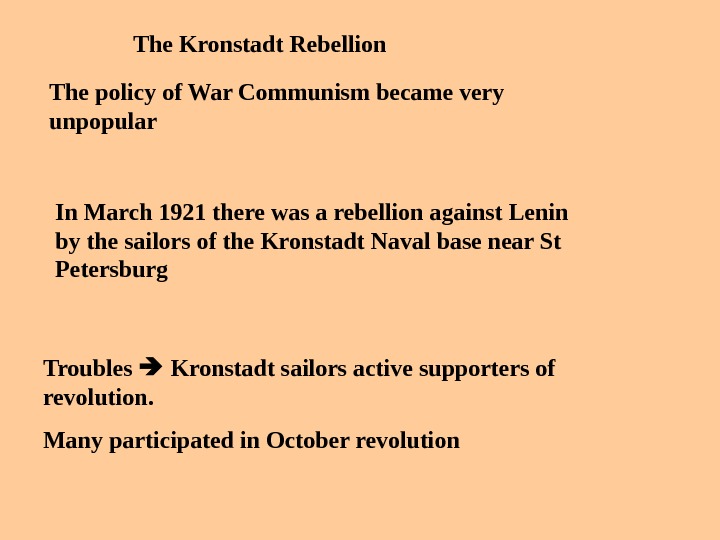

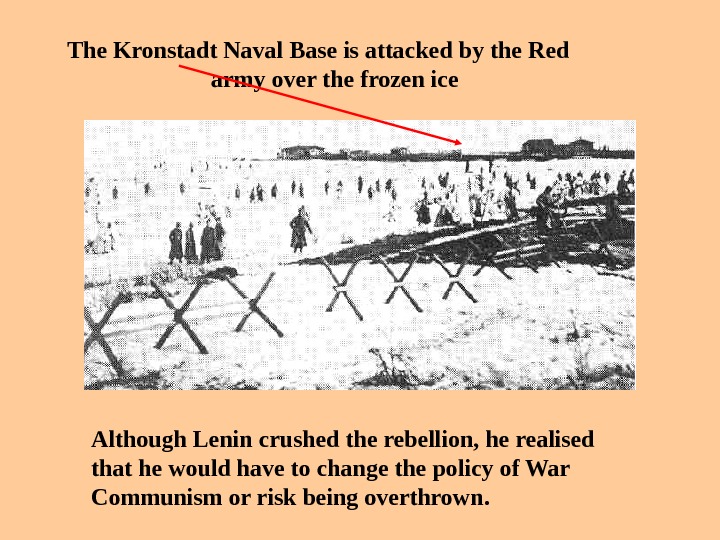
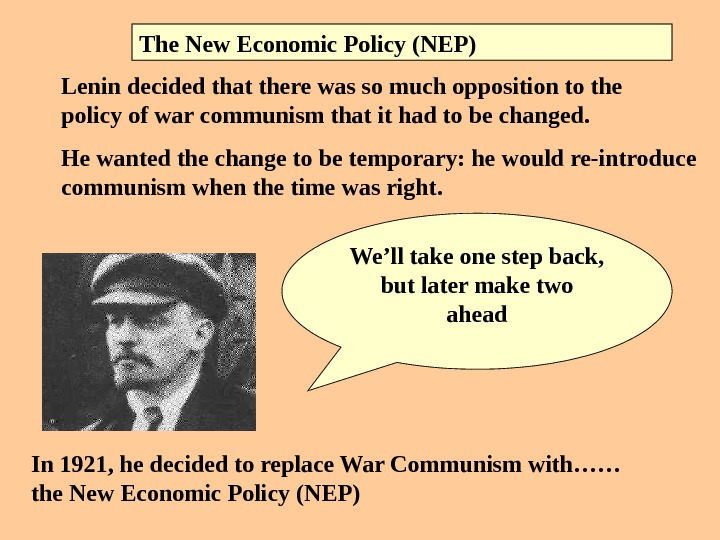
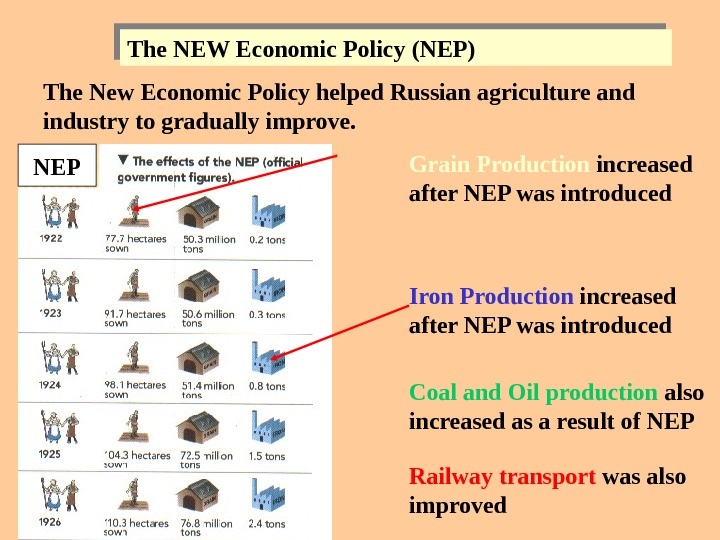
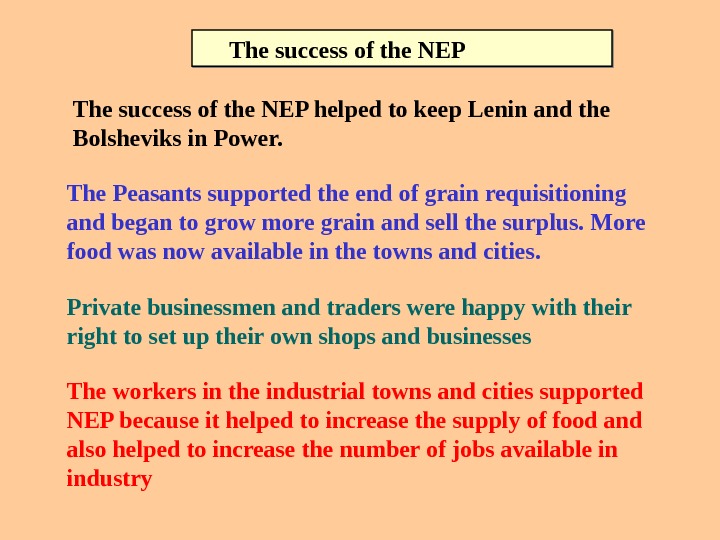
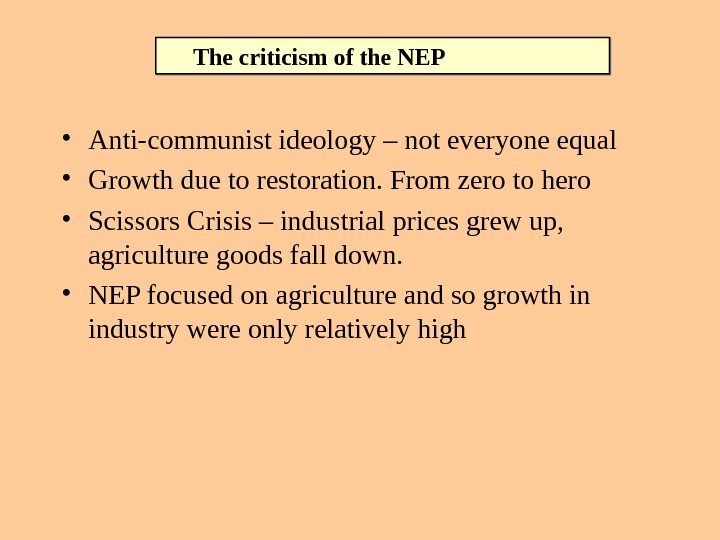
- Размер: 1.1 Mегабайта
- Количество слайдов: 22
Описание презентации The Two Sides in the Civil War The по слайдам
 The Two Sides in the Civil War The Bolshevik Party Industrial workers in the towns and cities Former soldiers and sailors Some of the peasants Supporters of the Tsar Supporters of the Provisional Government The Social Revolutionaries The Mensheviks Landowners Factory owners The Church Some of the peasants. The Reds The Whites
The Two Sides in the Civil War The Bolshevik Party Industrial workers in the towns and cities Former soldiers and sailors Some of the peasants Supporters of the Tsar Supporters of the Provisional Government The Social Revolutionaries The Mensheviks Landowners Factory owners The Church Some of the peasants. The Reds The Whites
 Some Russians refused to support either the REDS or the WHITES In the Ukraine, the courageous peasant leader, Nestor Makhno fought against the REDS and the WHITES. He wanted the peasants to be able to run their own lives. Eventually he had to flee overseas and went to live in France. www. anarchy movement. co
Some Russians refused to support either the REDS or the WHITES In the Ukraine, the courageous peasant leader, Nestor Makhno fought against the REDS and the WHITES. He wanted the peasants to be able to run their own lives. Eventually he had to flee overseas and went to live in France. www. anarchy movement. co
 In charge of the Red Army In charge of the White Army Leon Trotsky Admiral Kolchak General Yudenitch General Deniken
In charge of the Red Army In charge of the White Army Leon Trotsky Admiral Kolchak General Yudenitch General Deniken

 The Civil War : Advantages and Disadvantages Controlled the main industries Controlled the railways Red army was under unified control of Trotsky and followed Bolshevik ideas Communication among the Reds was relatively easy Did not control any of the main industries Only controlled a section of the trans-Siberian railway White army disunited under several different leaders with different aims and ideas Communication among the Whites was very difficult
The Civil War : Advantages and Disadvantages Controlled the main industries Controlled the railways Red army was under unified control of Trotsky and followed Bolshevik ideas Communication among the Reds was relatively easy Did not control any of the main industries Only controlled a section of the trans-Siberian railway White army disunited under several different leaders with different aims and ideas Communication among the Whites was very difficult
 The Whites had assistance from the Allies who sent troops to help USA FRANCE JAPAN UK
The Whites had assistance from the Allies who sent troops to help USA FRANCE JAPAN UK
 Why did the Allies intervene on the side of the Whites? To prevent supplies that they had sent to Russia from falling into German hands. To help the Whites to continue the war against Germany To try to prevent the Bolsheviks from winning the Civil War and spreading Communism
Why did the Allies intervene on the side of the Whites? To prevent supplies that they had sent to Russia from falling into German hands. To help the Whites to continue the war against Germany To try to prevent the Bolsheviks from winning the Civil War and spreading Communism
 The Fate of the Royal Family The Tsar and his family were taken captive by the Bolsheviks and moved to Ekaterinburg under house arrest By July 1918, Admiral Kolchak and his army were close to Ekaterinburg. They would soon be in a position to rescue the Tsar
The Fate of the Royal Family The Tsar and his family were taken captive by the Bolsheviks and moved to Ekaterinburg under house arrest By July 1918, Admiral Kolchak and his army were close to Ekaterinburg. They would soon be in a position to rescue the Tsar
 The Bolsheviks decided to kill the Tsar and all of the royal family. Tsar = symbol of old empire = reason to unite the Whites. “ We decided it here. Vladimir Ilyich (Lenin) believed that we shouldn’t leave the Whites a live banner to rally round” ( Sverdlov. Secretary of the Communist Party talking to Trotsky in 1918 The Tsar and his family were killed by members of the local CHEKA but the order seems to have been given by LENIN
The Bolsheviks decided to kill the Tsar and all of the royal family. Tsar = symbol of old empire = reason to unite the Whites. “ We decided it here. Vladimir Ilyich (Lenin) believed that we shouldn’t leave the Whites a live banner to rally round” ( Sverdlov. Secretary of the Communist Party talking to Trotsky in 1918 The Tsar and his family were killed by members of the local CHEKA but the order seems to have been given by LENIN
 Reasons for the Bolshevik victory Reasons for the Whites’ defeat Trotsky creates efficient and well organised Red army Reds united behind Bolshevik Ideas Reds have strategic advantages (industrial cities and railways) Communication was easier in the Red controlled area Allied support for Whites allows the Reds to be seen as ‘patriots’ Poor leadership and lack of organisation in the White army Whites were divided and disunited and were associated with the Tsarist government which was hated by the vast majority of Russians. Whites controlled few industries and only a small section of railway Communication was difficult in the huge White controlled area The Whites seen as unpatriotic because of Allied support for them.
Reasons for the Bolshevik victory Reasons for the Whites’ defeat Trotsky creates efficient and well organised Red army Reds united behind Bolshevik Ideas Reds have strategic advantages (industrial cities and railways) Communication was easier in the Red controlled area Allied support for Whites allows the Reds to be seen as ‘patriots’ Poor leadership and lack of organisation in the White army Whites were divided and disunited and were associated with the Tsarist government which was hated by the vast majority of Russians. Whites controlled few industries and only a small section of railway Communication was difficult in the huge White controlled area The Whites seen as unpatriotic because of Allied support for them.
 The Policy of War Communism. During the Civil War, Lenin introduced the policy of War Communism in Russia There were two reasons for this policy: War Communism Wartime control of the economy Introduction of Communist ideas into Russia
The Policy of War Communism. During the Civil War, Lenin introduced the policy of War Communism in Russia There were two reasons for this policy: War Communism Wartime control of the economy Introduction of Communist ideas into Russia
 Nationalisation of Industries Private Trade forbidden WAR COMMUNISM Rationing introduced Transport taken over by the Government Labour controlled by the Government Food requisitioned from the peasants
Nationalisation of Industries Private Trade forbidden WAR COMMUNISM Rationing introduced Transport taken over by the Government Labour controlled by the Government Food requisitioned from the peasants
 The Failure of War Communism The Policy of War Communism failed to improve the Russian economy. During the period of War Communism, the production of grain declined and only recovered after
The Failure of War Communism The Policy of War Communism failed to improve the Russian economy. During the period of War Communism, the production of grain declined and only recovered after
 The fall in Grain production led to food shortages and starvation Scenes like this were common in many Russian villages during the civil war
The fall in Grain production led to food shortages and starvation Scenes like this were common in many Russian villages during the civil war
 During the period of War Communism, industrial production also declined. Coal Oil Steel Bricks From 29 m tons From 9. 3 m to 3. 8 m tons From 4. 3 m to 0. 2 m tons From 2. 1 m to 0. 1 m tons
During the period of War Communism, industrial production also declined. Coal Oil Steel Bricks From 29 m tons From 9. 3 m to 3. 8 m tons From 4. 3 m to 0. 2 m tons From 2. 1 m to 0. 1 m tons
 The Kronstadt Rebellion The policy of War Communism became very unpopular In March 1921 there was a rebellion against Lenin by the sailors of the Kronstadt Naval base near St Petersburg Troubles Kronstadt sailors active supporters of revolution. Many participated in October revolution
The Kronstadt Rebellion The policy of War Communism became very unpopular In March 1921 there was a rebellion against Lenin by the sailors of the Kronstadt Naval base near St Petersburg Troubles Kronstadt sailors active supporters of revolution. Many participated in October revolution
 Demands of the Kronstadt Sailors Elections to the Soviets by secret ballot Freedom of speech Freedom for Trade Unions Release of all political prisoners End to requisitioning of grain from the peasants
Demands of the Kronstadt Sailors Elections to the Soviets by secret ballot Freedom of speech Freedom for Trade Unions Release of all political prisoners End to requisitioning of grain from the peasants
 The Kronstadt Naval Base is attacked by the Red army over the frozen ice Although Lenin crushed the rebellion, he realised that he would have to change the policy of War Communism or risk being overthrown.
The Kronstadt Naval Base is attacked by the Red army over the frozen ice Although Lenin crushed the rebellion, he realised that he would have to change the policy of War Communism or risk being overthrown.
 The New Economic Policy (NEP) Lenin decided that there was so much opposition to the policy of war communism that it had to be changed. He wanted the change to be temporary: he would re-introduce communism when the time was right. In 1921, he decided to replace War Communism with…… the New Economic Policy (NEP) We’ll take one step back, but later make two ahead
The New Economic Policy (NEP) Lenin decided that there was so much opposition to the policy of war communism that it had to be changed. He wanted the change to be temporary: he would re-introduce communism when the time was right. In 1921, he decided to replace War Communism with…… the New Economic Policy (NEP) We’ll take one step back, but later make two ahead
 The NEW Economic Policy (NEP) The New Economic Policy helped Russian agriculture and industry to gradually improve. Grain Production increased after NEP was introduced Iron Production increased after NEP was introduced. NEP Coal and Oil production also increased as a result of NEP Railway transport was also improved
The NEW Economic Policy (NEP) The New Economic Policy helped Russian agriculture and industry to gradually improve. Grain Production increased after NEP was introduced Iron Production increased after NEP was introduced. NEP Coal and Oil production also increased as a result of NEP Railway transport was also improved
 The success of the NEP helped to keep Lenin and the Bolsheviks in Power. The Peasants supported the end of grain requisitioning and began to grow more grain and sell the surplus. More food was now available in the towns and cities. Private businessmen and traders were happy with their right to set up their own shops and businesses The workers in the industrial towns and cities supported NEP because it helped to increase the supply of food and also helped to increase the number of jobs available in industry
The success of the NEP helped to keep Lenin and the Bolsheviks in Power. The Peasants supported the end of grain requisitioning and began to grow more grain and sell the surplus. More food was now available in the towns and cities. Private businessmen and traders were happy with their right to set up their own shops and businesses The workers in the industrial towns and cities supported NEP because it helped to increase the supply of food and also helped to increase the number of jobs available in industry
 • Anti-communist ideology – not everyone equal • Growth due to restoration. From zero to hero • Scissors Crisis – industrial prices grew up, agriculture goods fall down. • NEP focused on agriculture and so growth in industry were only relatively high The criticism of the NEP
• Anti-communist ideology – not everyone equal • Growth due to restoration. From zero to hero • Scissors Crisis – industrial prices grew up, agriculture goods fall down. • NEP focused on agriculture and so growth in industry were only relatively high The criticism of the NEP

